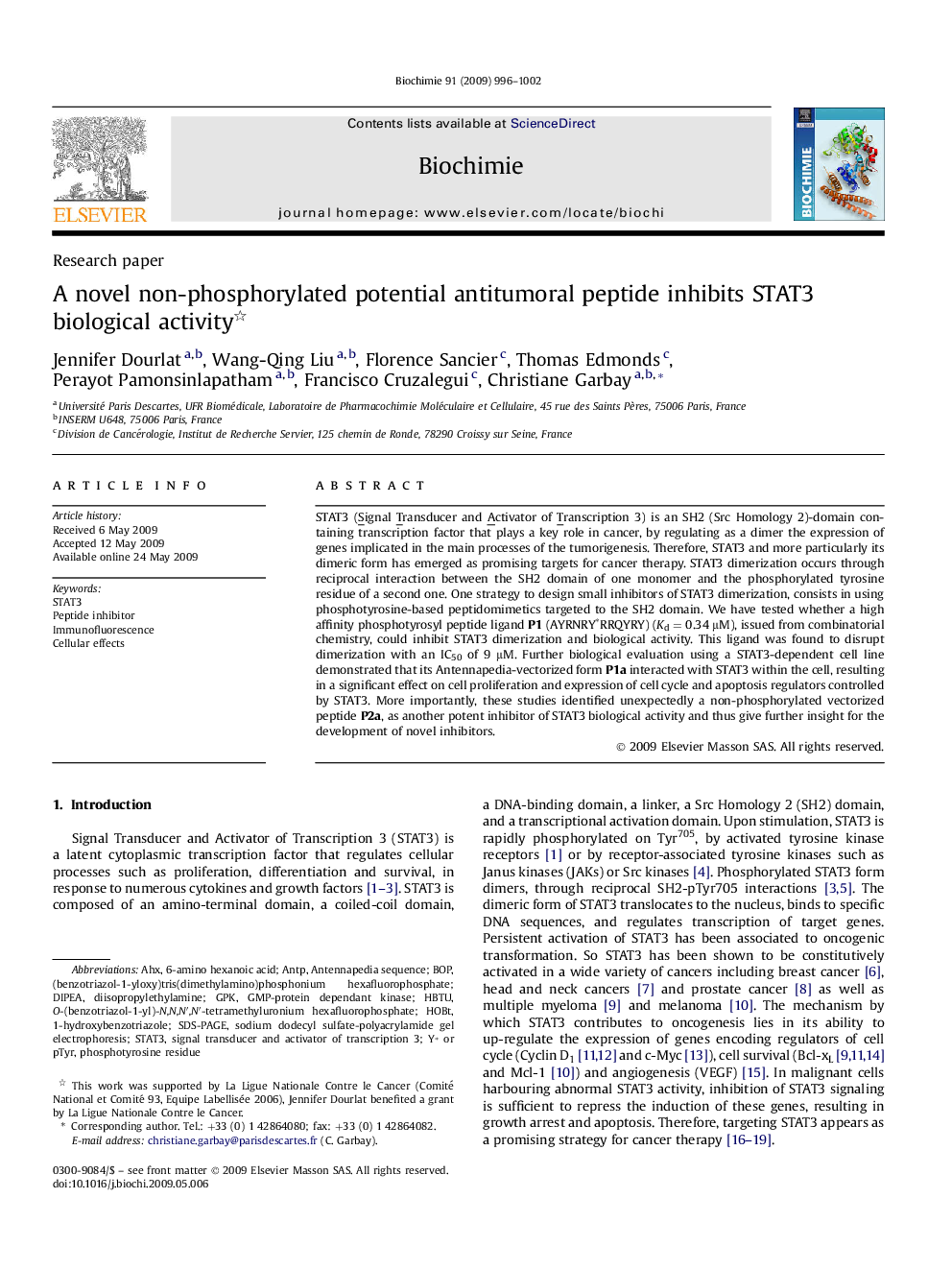| Article ID | Journal | Published Year | Pages | File Type |
|---|---|---|---|---|
| 1952840 | Biochimie | 2009 | 7 Pages |
Abstract
STAT3 (Signal Transducer and Activator of Transcription 3) is an SH2 (Src Homology 2)-domain containing transcription factor that plays a key role in cancer, by regulating as a dimer the expression of genes implicated in the main processes of the tumorigenesis. Therefore, STAT3 and more particularly its dimeric form has emerged as promising targets for cancer therapy. STAT3 dimerization occurs through reciprocal interaction between the SH2 domain of one monomer and the phosphorylated tyrosine residue of a second one. One strategy to design small inhibitors of STAT3 dimerization, consists in using phosphotyrosine-based peptidomimetics targeted to the SH2 domain. We have tested whether a high affinity phosphotyrosyl peptide ligand P1 (AYRNRYâRRQYRY) (Kd = 0.34 μM), issued from combinatorial chemistry, could inhibit STAT3 dimerization and biological activity. This ligand was found to disrupt dimerization with an IC50 of 9 μM. Further biological evaluation using a STAT3-dependent cell line demonstrated that its Antennapedia-vectorized form P1a interacted with STAT3 within the cell, resulting in a significant effect on cell proliferation and expression of cell cycle and apoptosis regulators controlled by STAT3. More importantly, these studies identified unexpectedly a non-phosphorylated vectorized peptide P2a, as another potent inhibitor of STAT3 biological activity and thus give further insight for the development of novel inhibitors.
Keywords
STAT3O-(benzotriazol-1-yl)-N,N,N′,N′-tetramethyluronium hexafluorophosphate(benzotriazol-1-yloxy)tris(dimethylamino)phosphonium hexafluorophosphateHOBtHBTUBOP1-hydroxybenzotriazoleAhxCellular effectssodium dodecyl sulfate-polyacrylamide gel electrophoresisSDS-PAGEImmunofluorescencediisopropylethylaminesignal transducer and activator of transcription 3AntpPeptide inhibitorDIPEA
Related Topics
Life Sciences
Biochemistry, Genetics and Molecular Biology
Biochemistry
Authors
Jennifer Dourlat, Wang-Qing Liu, Florence Sancier, Thomas Edmonds, Perayot Pamonsinlapatham, Francisco Cruzalegui, Christiane Garbay,
